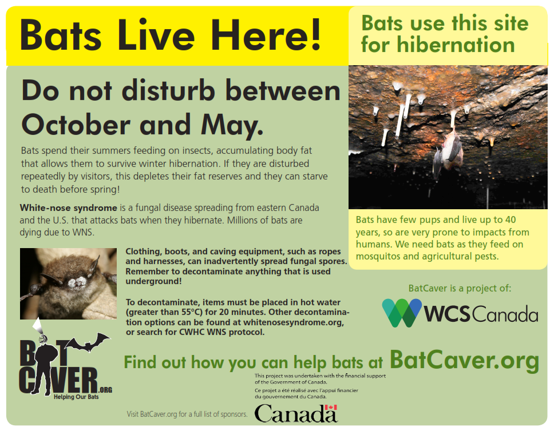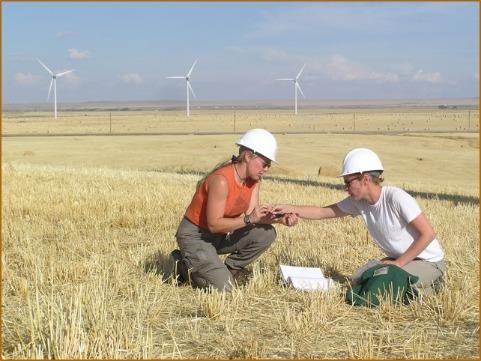What is Threatening our Bats?
Foraging Habitat Loss
Foraging habitat or areas where bats hunt for food may be eliminated or degraded as a result of draining wetlands, diverting waterways, eliminating ephemeral wet areas or reducing insect productivity as a result of toxic run-off or high rates of sedimentation. Urban landscapes have much lower prey availability than the original forest ecosystem.
Roost habitat and Hibernacula Loss/ Destruction
Essential bat roost habitat is very diverse; to account for different species needs and for different climatic conditions. Roost habitat provides the right microclimate for bats and protection from predators, depending on the time of day and year —caves and mines, boulder fields, tree bark, buildings and manmade shelters. Particular deforestation or fire-protection techniques affects bat species that rely on mature forests for roosting and foraging, and destruction of or eviction from man-made structures that are used as maternity roosts is common across the landscape.

For those species who hibernate during Canada’s cold months, bats lower their body temperature during hibernation to reduce energy expenditure. To do this, they take refuge in roosts called hibernacula (abandoned mines, crevasses or caves with stable temperatures). During this critical period of the year, bats are very sensitive to changes in temperature, lighting and noises. Visiting caves during the hibernation period can be detrimental to bats as the presence of humans may trigger unnecessary arousals.
White Nose Syndrome
White-nose syndrome (WNS) is caused by a fungus that thrives in cool and damp environments, and was unintentionally introduced to North America. From genetic evidence it appears this introduction was from Europe. It was discovered in a single cave in New York in 2006.
The fungus causes changes in their physiology, which causes them to rouse from hibernation more often than normal. This burns through their fat stores too quickly causing mortality generally due to starvation, or physiological complications. Cave-hibernating species such as the Little Brown myotis is particularly impacted by the fungus, and have experienced a 90-100% decline in population.
White-nose Syndrome has not yet arrived to British Columbia, so we are racing against time to learn about the fungus and understand how we can best mitigate its imminent arrival. WCS Canada's Cori Lausen is a member of the international White-nose Syndrome Response Team, focused on forming united front in the fight against WNS. Please refer to our resource page on White-nose syndrome to learn more.
Wind Turbines
All species of bats are susceptible to mortality from wind turbines, however migratory species are the most at risk. Wind turbines can cause death to bats not only through direct collisions but also due to pressure changes as bats fly near them. Dramatic changes in pressure can result in internal trauma and hemorrhaging in the lungs. Barotrauma and direct collision with turbine blades moving faster than bat echolocation can detect is a significant threat to certain migratory species such a Hoary bats who migrate from Canada into the southern North America every year.
Pesticides
Pesticides affect bats directly and indirectly. Crops are often sprayed in early evening, when bats are active. Direct spraying can quickly lead to the death of bats. Pesticides also affect bats indirectly by killing off a wide assortment of insects, which limits their food sources.
Persecution
Bats have long been misunderstood due to misconceptions and a certain “mystery” about them, perhaps propagated by the fact that they are nocturnal. As such, they have suffered persecution needlessly in the past which continues today. The reality is that bats perhaps live a life humans have trouble understanding, but that we need bats much more than we realize and they are a very vital aspect of our ecosystem. We need to treasure and protect them for the role they play and not be swayed by myths and misconceptions.
Depredation
House cats are the primary cause of bat mortalities reported to the BC Community Bat Program. Cats are natural hunters which has a surprising and serious impact on wildlife in general. In addition to protecting wild bats, also protect your cat from potential exposure to rabies by coming in contact with bats. Please consider keep your cats safe indoors, and learn more from the Happy Cat Brochure of the Stewardship Centre for BC.